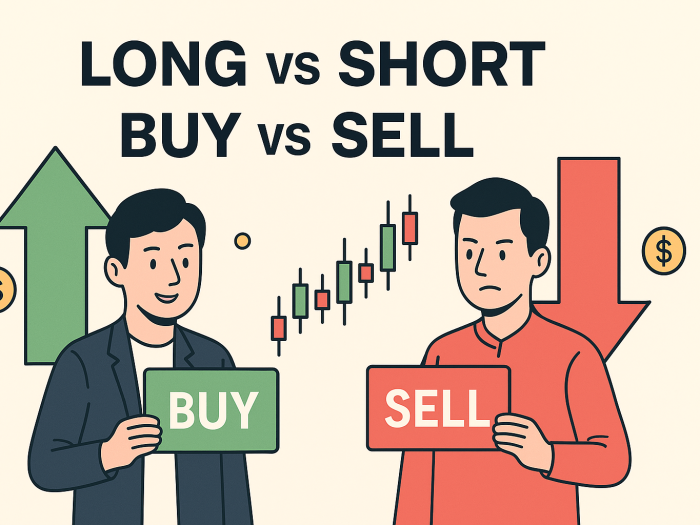Whether you’re trading stocks, forex, or crypto, understanding the difference between Long, Short, Buy, and Sell is essential. Many beginners confuse these terms, but mastering them can give you a clear edge in the market.
What Does It Mean to Go Long or Short?
Long and Short describe the direction of your trade—whether you expect the price to rise or fall.
| Term | Meaning | Example |
|---|---|---|
| Long | You buy expecting price to go up | Buy NVDA at $100, sell at $110 |
| Short | You sell first expecting price to go down | Short NVDA at $100, buy back at $90 |
Buy vs Sell: The Trading Actions
While Long and Short describe your market view, Buy and Sell refer to the actions you take on your trading platform.
- Buy: Open a long position or close a short position.
- Sell: Close a long position or open a short position.
How Long, Short, Buy, and Sell Work Together
| Market View | Position Type | Action to Open | Action to Close |
|---|---|---|---|
| Expect Price to Rise | Long | Buy | Sell |
| Expect Price to Fall | Short | Sell (Short) | Buy to Cover |
Example: Long and Short in Action
Trader A: “I’m going long on NVDA at $100.”
- This means they will buy NVDA, expecting it to rise.
- They plan to sell at a higher price to make a profit.
Trader B: “I’m planning to short NVDA at $120.”
- This means they will sell first, expecting the price to drop.
- They will later buy to cover at a lower price.
Quick Tip to Remember
- Long = Buy Low, Sell High
- Short = Sell High, Buy Low
Conclusion
Understanding the distinction between Long vs Short and Buy vs Sell is fundamental for every trader. Whether you’re scalping stocks, swing trading forex, or investing in crypto, using these terms correctly helps you navigate trades with confidence.
Want more trading insights? Explore our guides at LogicINV Academy and take your trading skills to the next level!
📥 Download Our Free Trading Terms Cheat Sheet!
Master essential trading terms with our quick-reference PDF. Perfect for beginners and pros alike.



